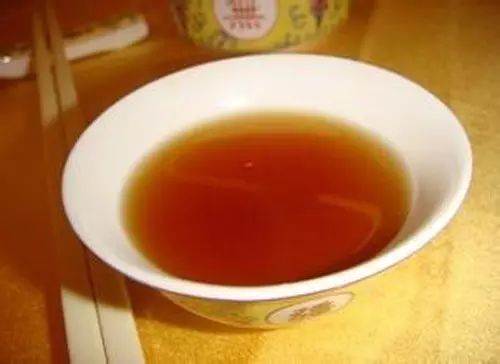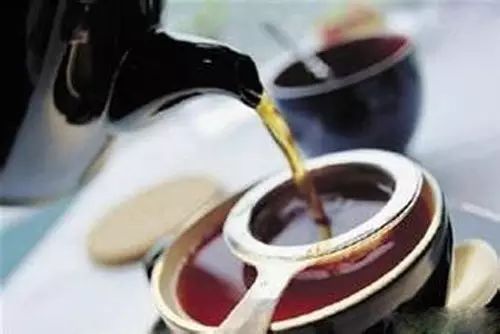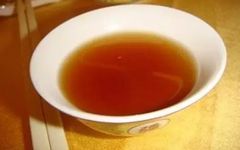Decoctions, also known as tangji (汤剂), refer to liquid preparations made by boiling or soaking herbs to extract their essence. This method is one of the earliest and most widely used forms in Traditional Chinese Medicine (TCM). As stated in the preface of Qian Jin Yao Fang (千金要方): “In ancient prescriptions for treating diseases, all used decoction methods; among a hundred prescriptions, there is rarely one that uses powders. … To eliminate the evil of diseases, decoctions are necessary to wash them away.” Decoctions adhere to the principles of TCM’s syndrome differentiation and treatment, allowing for adjustments based on symptoms. They are characterized by their simple preparation, rapid absorption, and quick efficacy.
In Zhu Nü Li Wen (祝疟疠文), it is recorded: “For those who are ill, decoctions are the first choice, followed by mineral moxibustion, and recovery will follow.”
Decoctions are primarily for internal use, with a few external applications such as bathing, steaming, and gargling. They play a significant role in the prevention and treatment of diseases.

So, what are the main advantages of decoctions?
1. They can adapt to the needs of TCM’s syndrome differentiation theory, allowing for flexible adjustments in the composition and dosage based on changes in the patient’s condition.
2. They are compound formulas, which help to fully utilize the multi-functional and synergistic effects of the herbal components.
3. As liquid preparations, decoctions are quickly absorbed and can exert their effects rapidly.
4. Using water as a solvent, they have no irritant effects or side effects.
5. They are simple and easy to prepare.
Currently, decoctions remain one of the important forms used in TCM clinical practice, accounting for approximately 50% of prescriptions in TCM outpatient services according to incomplete statistics.

What should friends pay attention to when “DIY-ing” decoctions?
Boiling Time
The heat source for boiling herbs affects the extraction efficiency and quality of the decoction. Traditionally, a direct fire method is used, starting with high heat (also known as wuhuo – 武火) before boiling, and then switching to low heat (also known as wenhuo – 文火) to maintain a gentle boil, which slows down the evaporation of water and aids in the extraction of effective components.
Water Quantity
The amount of water added during decoction is a crucial factor that directly impacts the quality of the decoction. If there is too little water for the amount of herbs, it may lead to insufficient extraction and result in a dry residue; conversely, too much water can dilute the decoction excessively, making it unsuitable for patients. Different herbs absorb water differently; lighter herbs will require more water, while denser herbs will need less. The traditional experience suggests adding water to the pot until it exceeds the surface of the herbs by 3-5 cm, and for the second decoction, it should exceed the residue by 1-2 cm. This method is convenient and relatively easy to master.

Number of Decoctions
Practical experience shows that a single decoction results in more loss of effective components compared to multiple decoctions. The thickness of the herbal slices or the appropriate particle size for grinding is important; generally, 2-3 decoctions are sufficient to meet extraction requirements. Excessive decoction not only wastes time and fuel but also increases impurities in the decoction.
Boiling Time
Most herbs should be soaked in cold water for a suitable time before boiling to allow the herbal tissues to become moist and permeated, facilitating the dissolution and extraction of effective components. The boiling time should be adjusted based on the nature of the herbal components, their texture, the amount used, and the decoction process and equipment. Generally, for exterior-releasing herbs, the first decoction should be boiled for 10-15 minutes, and the second for 10 minutes; for tonifying herbs, the first decoction should be boiled for 30-40 minutes, and the second for 25-30 minutes; for general herbs, the first decoction should be boiled for 20-25 minutes, and the second for 15-20 minutes. After decoction, the liquid should be filtered while hot to minimize the residue left in the herbal dregs.
This article is sourced from the internet, and the copyright belongs to the original author. The images and text shared by Yuan Zhen Tang on WeChat are for public welfare sharing and do not necessarily represent the views of Yuan Zhen Tang. The intention is to disseminate positive and healthy content for reference and learning. All merits of this article are dedicated to the original author and readers. If there are any infringements or violations, please contact the editor for correction or deletion.

